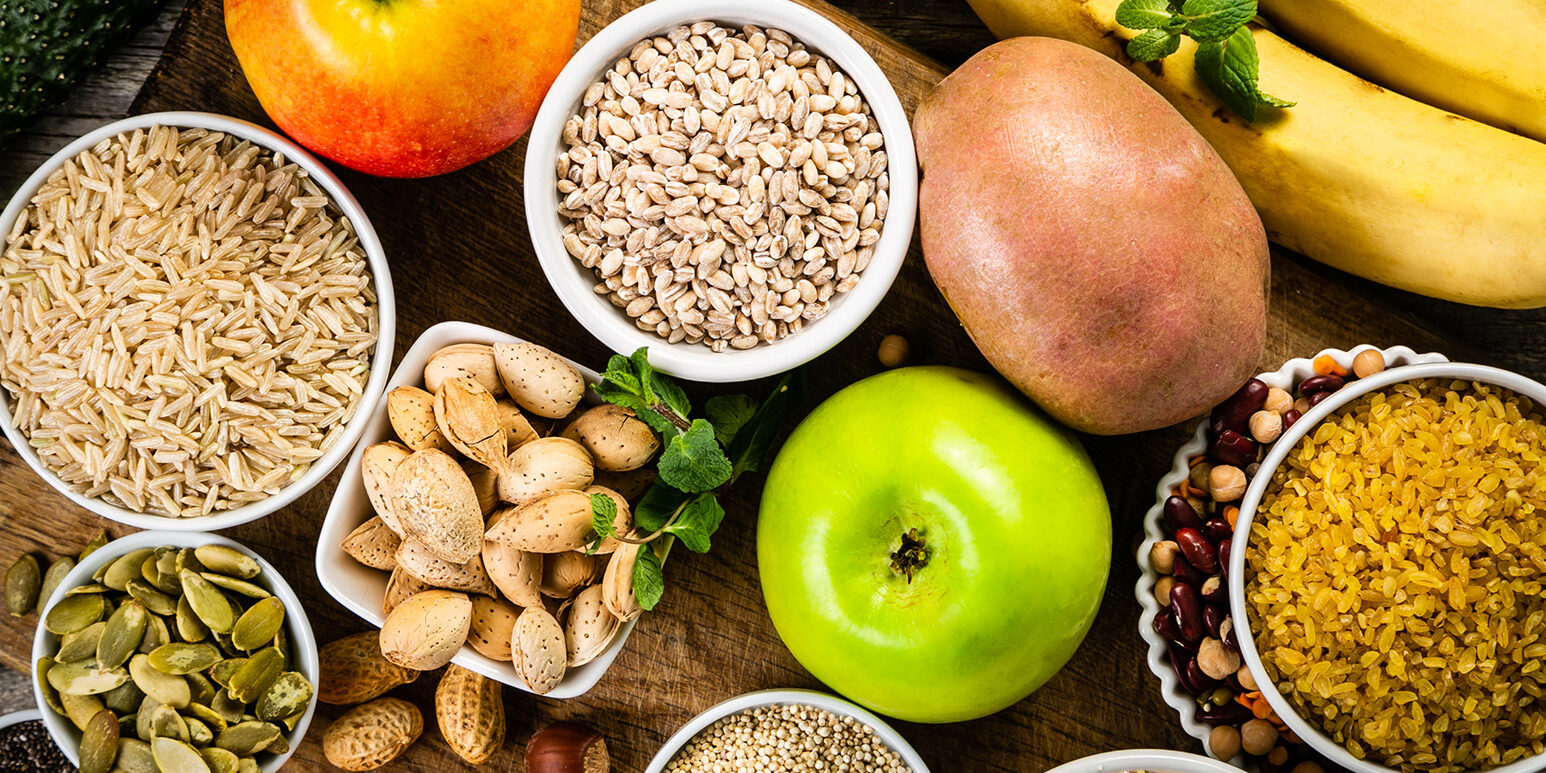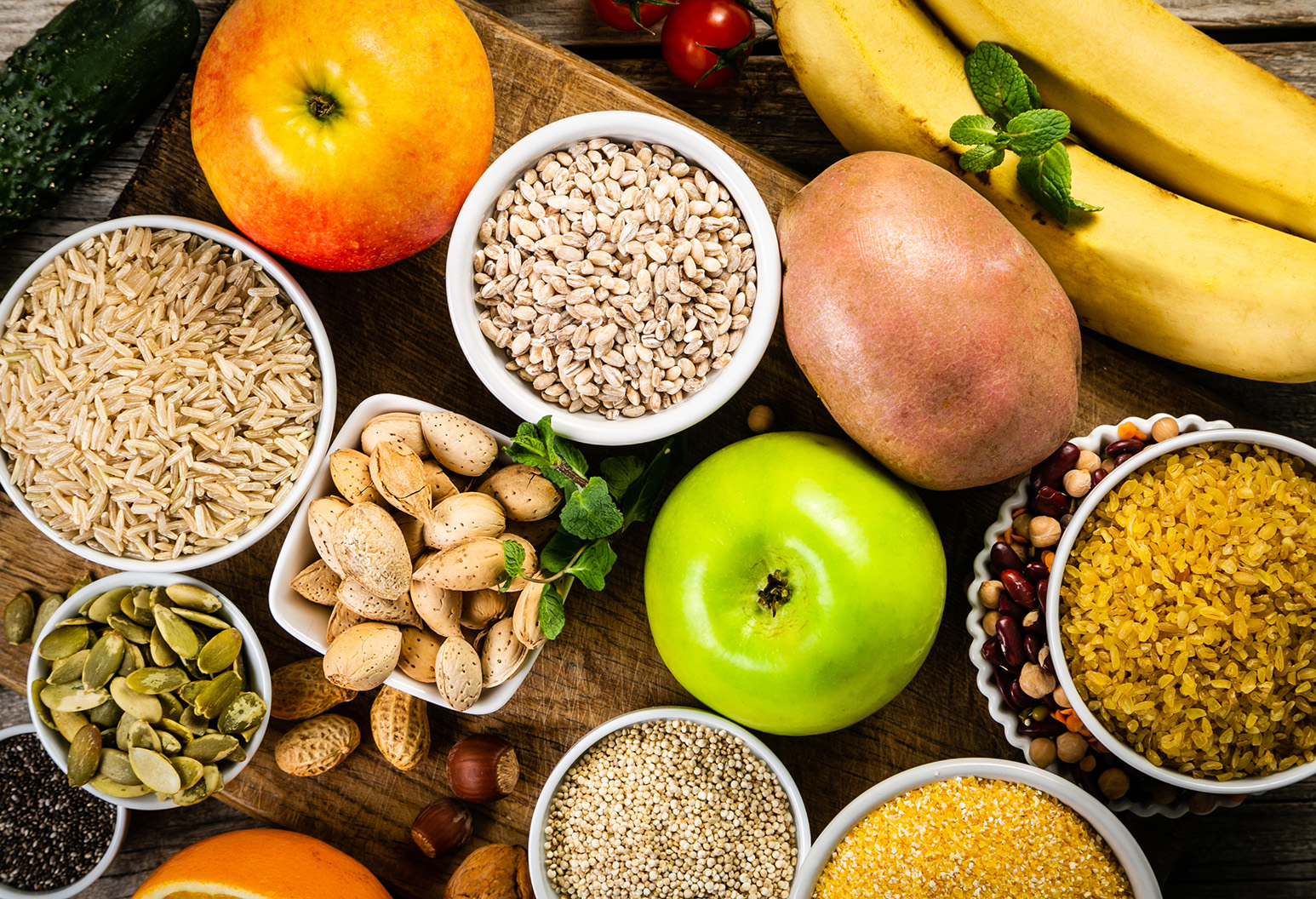By Helaine Krasner, MS, RDN, CSOWM, CDN
We are living in a time of unprecedented carb phobia. Messages that try to convince us that carbohydrates are harmful to our health and wellness proliferate on the internet and other media outlets. While it’s true that excessive intake of carbohydrates may have negative effects – especially when consuming too much refined grains, processed foods and added sugars — it’s also true that carbohydrates are our body’s preferred energy source and contain many essential nutrients. Whole grains in particular are associated with many health benefits.
What are whole grains?
Whole grains are considered complex carbohydrates due to their starch and fiber content. They have not been processed in a way that removes vital nutrients and fiber. A whole grain kernel has three parts.
- The outermost layer is the bran, which contains fiber, B vitamins, iron, copper, zinc, magnesium, and phytochemicals – health promoting compounds found in plant foods. This is the layer often removed in processing.
- The middle layer is the endosperm, which contains carbohydrate as starch, some protein and a small amount of B vitamins and minerals.
- The core is called the germ. This part also is removed when refining grains and is rich in healthy fats, vitamin E, B vitamins, phytochemicals and antioxidants. Refining grains began during the Industrial Revolution in the 1800s to make them easier to consume and to extend shelf life.
The USDA Dietary Guidelines for Americans recommends we consume whole grains as part of a balanced diet that includes all food groups. Using the MyPlate method as a guide, it is recommended that grains take up ¼ of our plate and that we aim to consume whole grains at least half the time. Unfortunately, research shows that 98 percent of Americans are not consuming the recommended amounts of whole grains and are overconsuming refined grains that have been stripped of many vital nutrients.
What are the benefits of whole grains?
Bran and fiber slow the breakdown of starch to sugar (glucose). This helps keep blood sugar more stable when eating carbohydrates and reduces risk of type 2 diabetes. Fiber also promotes bowel regularity, helps lower cholesterol, and increases satiety so we feel full longer. Replacing refined grains with whole grains can reduce total cholesterol, LDL cholesterol, triglycerides and insulin levels, thereby reducing risk of cardiovascular disease. The minerals and phytochemicals found in grains may protect against some forms of cancer.
Whole grain products:
Examples of whole grains include 100% whole wheat flour, barley, oats, brown rice, wild rice, quinoa, buckwheat, millet, bulgur and corn.
What’s a serving?
For most grains ½ cup cooked, or 1 oz, is considered one serving.
How to incorporate more whole grains into your diet.
- Select whole grain cereal with breakfast
- Incorporate whole grain breads and crackers into meals or snacks
- Select popcorn as a snack in place of pretzels or sweets
- Try unfamiliar grains like quinoa or farro as a side dish
- Read labels and check to see if “whole” grain is listed among the first three ingredients
Reference: https://www.hsph.harvard.edu/nutritionsource/what-should-you-eat/whole-grains/
Helaine Krasner, MS, RDN, CSOWM, CDN is a registered dietitian nutritionist who takes great pride in helping our Bariatric and Medical Weight Management patients achieve their health and weight loss goals.


